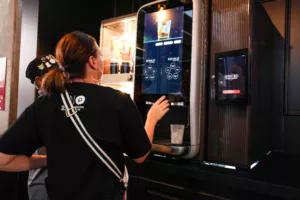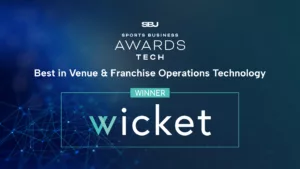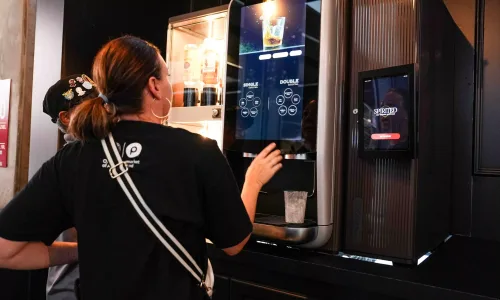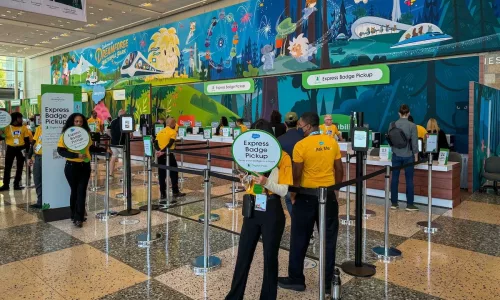Wicket’s Sanjay Manandhar provides some insight on how the media and technology landscape is changing, with a focus on security at live events.
Sanjay Manandhar is an entrepreneur and a passionate student of technology that he says, “has arrived in waves since the advent of electricity.” Manandhar came to the US in the mid 1980s to attend MIT where he earned a BS in electrical engineering and computer science and a Masters at the MIT Media Lab. In 1994, during the wave of the internet, he brought connectivity to his native country, Nepal. After returning to Cambridge, Massachusetts with an MBA from INSEAD in France, he founded Aerva, a browser-based content management platform that revolutionized traditional out of home advertising.
Sanjay is an avid believer in ‘blue ocean strategy’ — the concept of looking to the ocean to create something that no one has done before. He is the visionary behind Wicket’s newly developed security solution, a product for high value venue operators that will use artificial intelligence and machine learning to modernize the dynamic of live event surveillance and digital ticketing.
What aspect of modern technology do you believe to be the most relevant right now?
Manandhar: I’m old enough to have seen many different technology waves. While I was still in undergrad, I saw the wave of the computer happening, but really the one that I got involved with first was the internet. The internet was a hugely pervasive technology that people didn’t understand from the beginning.
Today, the artificial intelligence and machine learning movement is changing the world just as much as the internet. If you’re not part of it, pretty soon you are not going to do so well against your competitors — because they will be busy building more automation and becoming more efficient.
What is Amazon doing that is changing the game?
Manandhar: I met Jeff Bezos in 1997 when he was about to go public, and I was an investor. I had a one on one chat with him then, and what he said was so prescient. When I asked him why his website was different from any other website, he said, “I am not a website that sells books. I am a technology company.” He told me how they had invested heavily in the backend, and about how his company would be able to license its tech to big companies like Target.
Then he went on about recommendation engines and electronic carts. These were new words. He also said, “We will make big bets and do big things. Some will fail, and some will work and become phenomenal successes.” I’m thinking of Amazon Web Services, Kindle, Alexa, etcetera. They were doing something totally different, and they changed the retail landscape forever by creating a Cloud market and opening doors to many other markets — boxes — for themselves.
Amazon followed the blue ocean strategy by leveraging the kinetic energy in the market and looking toward the ocean to go where no company had gone before.
What ultimately drove you to join Wicket?
Manandhar: When I joined the company, there were many problems to solve. There was a lack of real productization and a limited understanding of how we could differentiate our product technology. I knew that I could make an impact there. Here at Wicket, we have three companies that came together. It has been an amazing petrie dish for creating a combined entity, especially because there are three different cultures, products and services, and three different customers in various verticals. Effectively we are in a startup phase. This is where I come from, and ultimately, that’s where I want to be.
How has your background as a technology entrepreneur impacted the company direction?
Manandhar: I have always built products, and I understand the gestation and economics of building products, more than creating service businesses. A few days after I joined, I remember going to our leadership team, and we had a very good chat. I really liked the baseline thinking, and I told them that we could not do everything. We have to pick a box. The box I believed that we should go dominate is the box called high value venues.
The media world is a $280B media revenue business annually in the US. When Google, Facebook and Twitter came marching into the party, they rapidly ate up 80% of the revenue. Now, traditional media companies are having to squeeze into the remaining 20%. Surviving in that world is a tiny niche called digital out-of-home. If you want to be a tiny sliver of the 20% of the companies in this pressured bucket, you have to do something different. You cannot be in the same bucket as pure-play digital out-of-home companies.
Something that is an adjacent opportunity is fan security and protection at concerts. I knew that this would be our path. Maybe I made a little bit of a difference here in changing people’s thinking.
Can you describe the technology you are creating?
Manandhar: In April 2018, we created the concept for a product called Fanguard (Access), got the trademark and filed the patent. The engine we have created can be used for all sorts of things, including surveillance and facial ticketing. Like EZ Pass or TSA Precheck, if you give up a little bit of your likeness, you can breeze through ticketing gates and simplify the security process at high value venues.
Our data metric cameras are twinned with the smart screen displays, so when you are watching a promotion or advertisement at a live event, the cameras are watching you — for two reasons. First, to figure out your age and gender metrics. This data is really important for live event advertisers trying to target a particular demographic with their message. Secondly, the cameras can be used for security and surveillance. This is for the protection of everybody at the venue — the artist, the fans and the staff.
How will this actually work?
Manandhar: Anywhere there are more than five people congregated is considered a soft target. When you have an event with 100,000 people, this is a huge soft target. Those kinds of places are always stressful for security personnel. What Fanguard does is assist security personnel and truly automate security. Without our offering, the way security is handled today is through human surveillance through cameras throughout our venue. Because the human eye cannot make a good distinction between folks that look similar or people that are disguised by what we call occlusions. Occlusions are things like mustaches and sunglasses, hats, etc. The computer can better recognize individuals through occlusions than a human can.
Now we have basically created an assistant to a human in the form of a mobile application. If we tell the security personnel that they have massive computer power behind them, this becomes much less stressful when it comes to large scale of the venues. Our system will be used in that capacity to help humans that are worried about soft targets do their jobs during live events.
How do you think this technology will shape the future of live sports and entertainment?
Manandhar: When people realize that this technology doesn’t harm them, they will give up elements of their privacy for convenience or personal safety. In the late 90s, people didn’t want to put their credit card numbers on the Internet. Slowly but surely, people began shopping online because the convenience was too compelling. Now everyone puts their credit card details online.
My suspicion is the same thing will happen here. If you are asked to put your face out there knowing that it might help keep a concert venue safe, you will probably opt in. After all, it already is out there, due to social media. People are opting into TSA Precheck for those same reasons. People are opting in quickly. Facial authentication in various use-cases will be in flux for a while, but over time I believe, like entering one’s credit card details online, it will be a gentle trend that will gather momentum in the coming years.
When a live event operator or media executive says, what should we do for the “XYZ Big Event” for ticketing? I want someone in the room to say, hey, there’s this company called Wicket that does facial ticketing. We want to be that name that is mentioned. The human brain cannot hold more than three things at a time, and I want us to be one of those three for facial authentication. That’s where I want to be.







